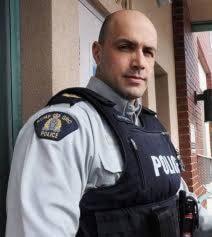Did you know that restorative justice can be administered for adults charged with minor offenses as well as youth?
This topic came up following a report from the Trail and Greater District RCMP a few weeks ago announcing the launch of a new website and re-launch of a Facebook page - for the Greater Trail Community Justice Program Society (Society).
In short, the Society delivers the process of restorative justice as a way to facilitate a meeting between the person impacted by a crime and the person responsible for the incident.
Read more: Restorative Justice allows the focus to be on the victim
Read more: Trail RCMP warn of recent frauds
The goal is to find an agreed upon resolution between parties outside of the court system, such as, but not limited to, the accused completing a certain amount of hours in community service.
Historically, restorative justice has involved offenders in the pre-teen or teen-aged years, but as Sgt. Mike Wicentowich points out, it is not limited this age group.
“RJ (restorative justice) includes youth and adults,” he began. “It focuses on youth sometimes as they are more likely to be diverted from the court system, but it can be involve people of any ages as long as everyone agrees to work it out together.”
Two people in a conflict can agree to restorative justice after charges are laid by Crown if it is a minor incident wherein an agreed upon resolution would resolve the matter in a similar way (to the court).
For example, if one person was charged with mischief under $5,000 for breaking a window of a victim’s vehicle during a road rage incident; and is charged by Crown counsel, that person could be given a chance to apologize to the victim and pay for the window.
“Then the charge would be stayed as the courts would have likely accepted that as a proper resolution,” Wicentowich explained. “This process is for first time/one time adult offenders who show remorse about their actions. The types of charges are usually minor and can include a wide range.”
How it works, is the RCMP, probation, parole, Crown, and the victim can all refer matters to RJ if the offence meets the criteria.
“A trained RJ facilitator then follows a legal process to resolve the matter between the parties,” the sergeant clarified. “However, if the person responsible fails to follow through on the measures agreed upon during the resolution, Crown can continue to pursue the matter in court.”
Detachment commander Sgt. Wicentowich has been part of the Greater Trail Society over the last two years, working alongside its volunteers to completely revamp the program. As always, confidentiality is essential.
Aside from updating digital platforms, Wicentowich says the Society completed four restorative justice forums in 2020, meaning they have diverted four individuals from the Criminal Justice System while holding them accountable directly to the person or persons affected.
The results of are quick and effective, he said.
“I’d like to thank the Greater Trail Community Justice Program Society board and volunteers for their hard work with restorative justice over the last year,” Wicentowich added.
“The Trail and Greater District detachment continues to expand service in the community in order to protect public safety.”
Originally known as the Trail Youth Justice Program, this alternative way of addressing youth crime began in 1996 when a team of community members came together and developed a process to work with persons that were involved with minor offences and incidents committed in Trail and the surrounding towns.
In 2007, it became a registered nonprofit called the Greater Trail Community Justice Program Society, comprised of a board of community members living in Rossland, Warfield, Trail, Montrose and Fruitvale as well as local government officials (often a member of municipal councils), RCMP, and people working for local service providers.
About restorative justice
Restorative Justice seeks to create just outcomes by repairing the harm caused by crime and conflict. It involves the participation of those responsible for the harm and those impacted directly and indirectly in finding a solution that repairs and promotes trust and harmony.
It is a collaborative and inclusive process that typically addresses the needs of the person impacted and holds the person responsible, meaningfully accountable for their actions. In this approach, crime is understood not only as breaking the law, but as a violation of people and relationships and a disruption of the peace in a community.
It encourages those responsible for causing harm to take responsibility for their behaviour in a meaningful way, to gain insight into the effects of their behaviour on others, to change their behaviour, and to take steps toward reintegration into the community.
Those impacted, meanwhile, are granted a chance to ask questions, to receive answers, to gain understanding, to explain the impact the event has had on them, and to contribute to the outcome of the process.
Finally, the process enables the community to reinforce its values and expectations, to understand the underlying causes of crime, and to determine what can be done to repair the damage caused by crime.
Restorative justice serves to promote community well-being and to reduce the future incidence of crime.
newsroom@trailtimes.ca
Like us on Facebook and follow us on Twitter
